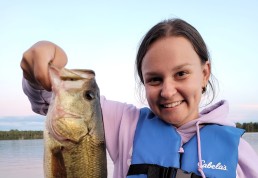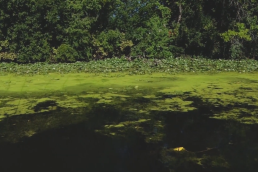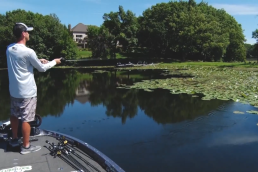It’s Topwater Time for Wisconsin Bass and Pike
SHARE THIS POST
All fishing is fun, but I don’t think too many anglers would disagree that catching a fish on topwater may be one of the most exciting bites of the year. The drug for me in fishing is the element of surprise. And what enhances that even more is a fish exploding on the surface of the water to grab a lure.
In Wisconsin, the sweet spot months for topwater action start right now in June through mid-July before the warming waters drive some of the bigger fish deeper. There is a slow spell for topwater during our dog days, and then the topwater bite can fire up again in September and early October when waters begin to cool.
There are a million topwater baits on the market, but I’d like to simplify the selection into groups to make the topwater arsenal selection easier. Not every topwater bait is right for every application. To avoid hauling dozens of baits, let’s talk about a few that could cover a lot off applications for you as a Wisconsin bass and pike fishermen.
Let’s start out with baits that cover a lot of water: topwater search baits. Turn to these baits when working a big weed flat or a big stumpy bay. When you have this much water, you don’t have time to pick and poke every group of weeds or every fall-down.
These flats could be from a couple acres on some lakes to a hundred acres on bigger lakes. You need a “lawn mower” of a bait to cover as much water as you can as fast as you can. You are either trying to get your lure in front of as many fish as possible, or trying to pinpoint small intricacies on the flat that seem to be holding all the fish.
For many years, a buzzbait was my lure of choice for this type of application. It’s still a good bait, but for the most part, a buzzbait is speed-specific to keep it working along the surface. I like a little more variety.
If you are a muskie fisherman, or you have been in a tackle shop here in Wisconsin, you have seen or fished a Wisconsin legend, the Roberts Mud Puppy. It’s the original rotating tail bait what was later expanded on with the Bucher Top Raider. I’ve fished both of those lures for over 40 years and caught some great largemouths (and smallmouths) ‘by accident” over the years. Back 20 years ago, I remember thinking, “Someone should really make a bass-sized lure like this.”
Well, my wishes were answered about 15 years ago with the release of the River2Sea Whopper Plopper. The Whopper Plopper (or similar lures) is one of the best surface baits out there for just flat-out covering water. There is something about that “plop” noise of the tail that drives bass crazy. Unlike a buzzbait, a rotating tail bait can be slowed down or sped up to fit what the fish want any particular day.
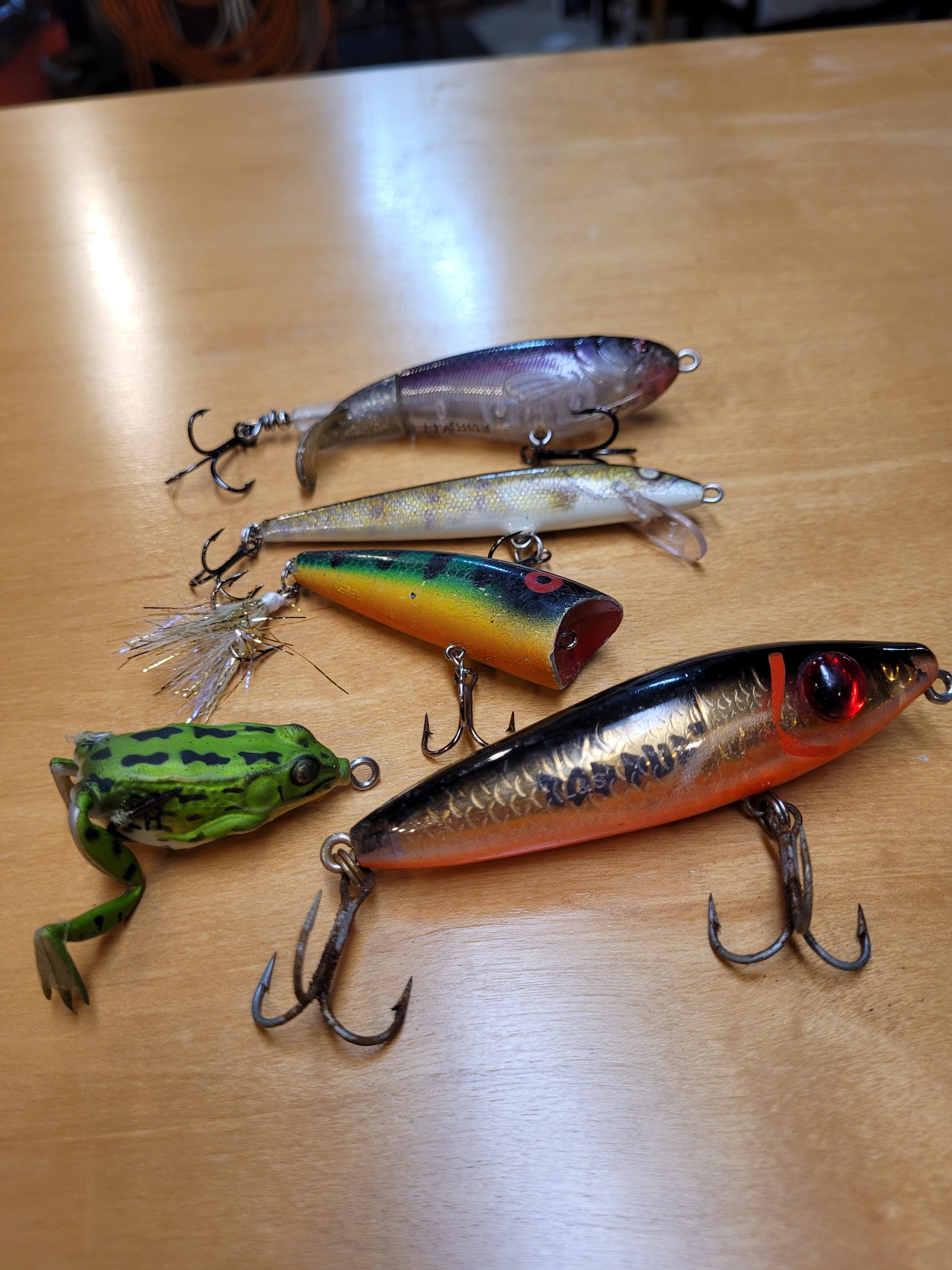
Now, let’s talk about the other end of the spectrum: slow baits for pinpoint locations. In these locations, a search bait could land and be reeled away from a fish sitting in cover before it even has a chance to react. In these situations, you want a bait that can be worked a long period of time without moving it very far. This would be a spot where it just looks like a bass or pike should be sitting, and you want to make an offer it eventually can’t refuse.
These spots could be trees or stumps along a shoreline. It could be casting along the edges of docks, or even under a dock, depending on your casting abilities. It could be along the edges or in the pockets of lily pads. In any of these cases, you want that bait to land and sit there while you twitch it or pop it, trying to entice that fish to come out of its ambush spot and smash that bait.
My two can’t-miss baits for twitching and popping around cover are oldies but goodies. If the fish are spooky, you can’t beat a good old #9 Original Floating Rapala. Silver, gold or perch seem to work anywhere here in the Badger State. Cast them as close to your cover as you can get, and once it lands…wait. Wait for all the ripple rings to go away. The first move is to barely move it just enough to make a few more rings. To me that tells Mr. Bass that yes, that thing I just noticed is alive.
If nothing happens, the next move is to pull it about 6 to 12 inches and then let it pop back to the surface. I may wait for the ring to disappear again and then pop it hard under the surface. Once I am 3 feet from where it landed, reel it up and fire another cast. Strikes come in that first 3 feet.
Are you enjoying this post?
You can be among the first to get the latest info on where to go, what to use and how to use it!
If the water is a little darker and fish will tolerate a little splashier presentation, I like a small popper. My personal favorite is the 2.5-inch Rebel Pop R. What I like about the Pop-R is that the feathered tail hangs down when it’s resting. There is something about that tail hanging down that they love.
One thing I would like to mention about poppers: Less is more! Some anglers get a popper in their hands and it’s like they want to see how much water they can throw. That will literally spook a spot. Think of it more as a tiny spit of water. Like the #9 Rapala, you want to get the most out of about 2 to 3 feet of travel. Just barely move it forward,
Note that the Pop-R can be cast on a baitcaster, but the #9 Floating Rapala is so light that it requires spinning tackle. Take that into account with the cover present.
We covered fast and slow. There are a few in-between choices. Use these surface baits to cover water, yet you can stop and start them if needed. The most popular for this application would be the walk-the-dog type bait like the Heddon Zara Spook. These can be walked fast or slow or stopped and started. There are many dog-walking type baits out there and they all have a unique personality. You almost need to find one that fits your retrieve style or cadence.
But I’m going to share one that you can’t work wrong. A friend of mine who does a lot of Gulf fishing for snook and speckled sea trout tipped me off to this one. It’s a staple down there: the Mirrolure Top Dog or Top Dog Junior. It’s made for saltwater use, but no one told our bass and pike. It’s one of the easiest to work and longest-casting walk-the-dog lures I’ve ever used. It also has this internal one-knocker type clicking noise that seems to drive fish nuts. You won’t find it in local tackle shops here, but they are readily available online. It’s hard to beat black, bone, or their color 808, which has a gold insert with a brown back (my favorite).

One other slow but steady fish catcher is the old Jitterbug. It has a very specific retrieve speed. It doesn’t do well with weeds, but it will flat-out catch fish on a big flat where the weeds are below the surface.
It’s hard to talk about topwater baits without a mention of the hollow body frog. It’s the most weedless and snag-resistant of the topwaters. You can throw it anywhere; it’s a great way to locate bass in the slop. But it has a drawback: The hook-up ratio is poor. You can use it as a search bait, and if you get a blow up, throw back with a Texas rigged Senko or something similar.
My best success here in Wisconsin with hollow body frogs is picking a very small one that bass can get completely in their mouths when they eat it. My two personal favorites are the Scum Frog Junior and Lunkerhunt Pocket Frog. Both create the commotion needed in and around pads and slop but are small enough that bass completely engulf them. Your hook-up to strike ratio skyrockets just by going to a smaller bait here in Wisconsin.
It’s topwater season! Don’t get overwhelmed with all the options in your local tackle shop. A steady-moving search model, a pinpoint structure model, a dog-walker, and a little frog will get you a long way here on Wisconsin’s bass and pike waters. Get ready for the most exciting strikes of the season!
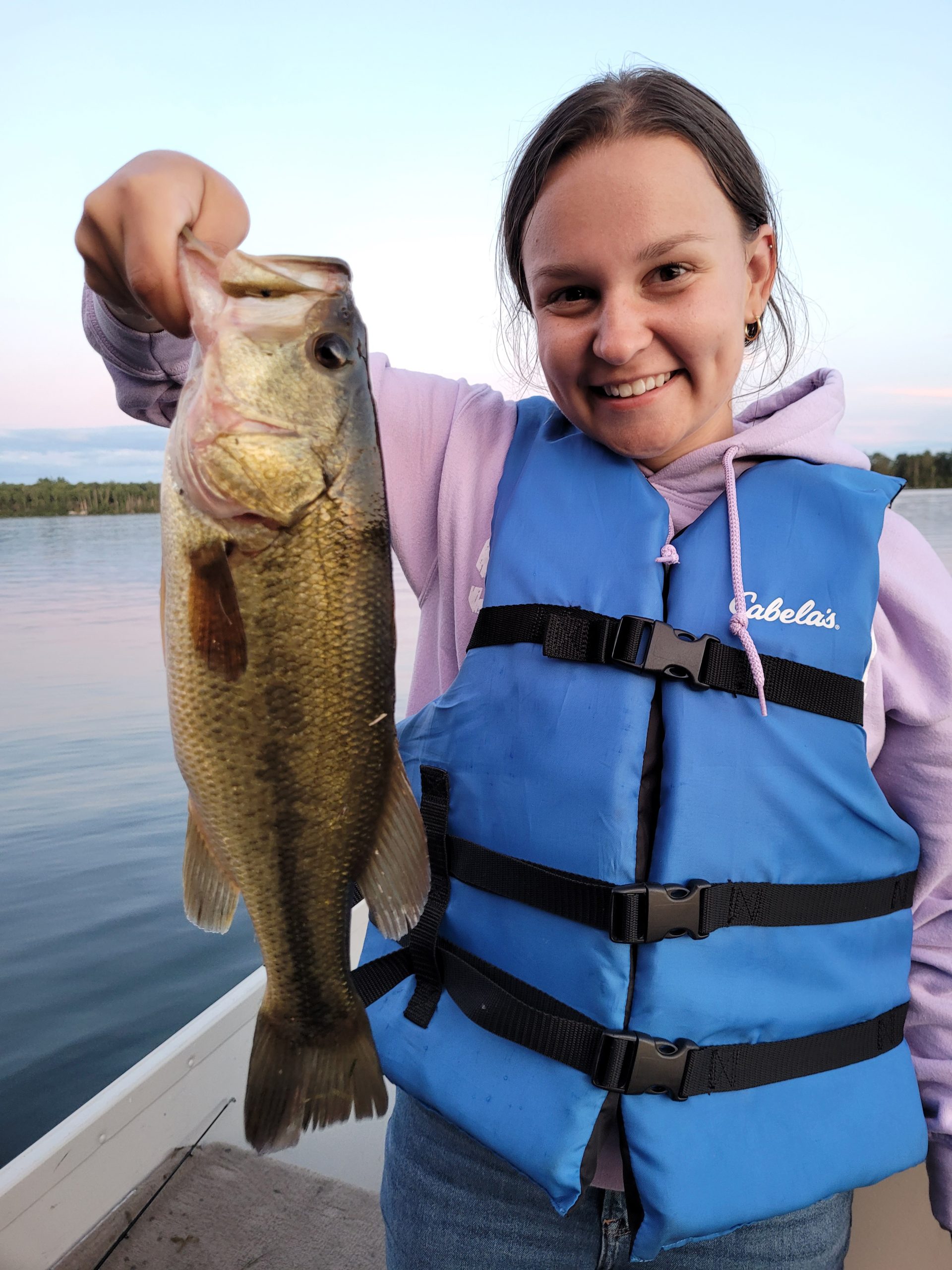
MWO
SHARE THIS POST
Did you enjoy this post?
You can be among the first to get the latest info on where to go, what to use and how to use it!
Marc Wisniewski
Marc Wisniewski is an avid Wisconsin angler specializing in Lake Michigan shore and inshore fishing. He also chases bass, pike, and muskies anywhere he can. He has built custom rods for 35 years and makes lures from wood, lead and soft plastics. Wisniewski has been writing fishing articles for more than 30 years.
